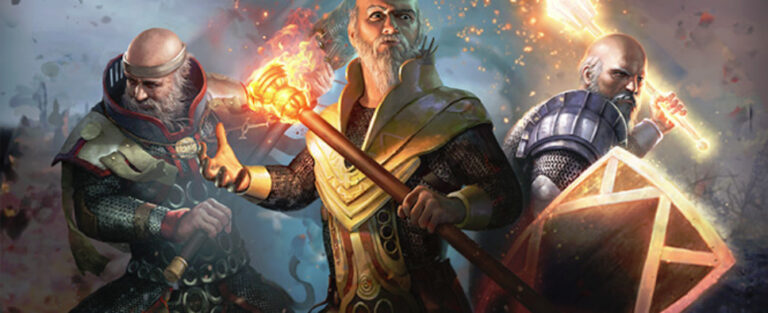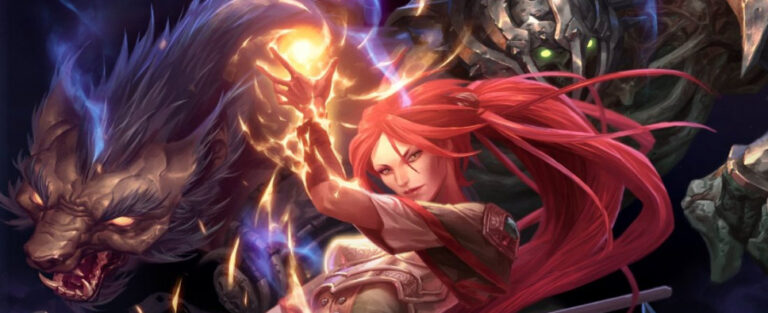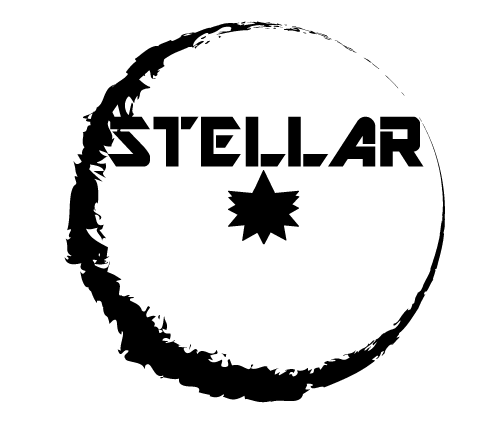After years of silence, Larian Studios has finally given us the announcement we’ve been hoping for – a true Divinity sequel is in development. At this point, we really only know that we’ll be returning to Rivellon as a Dragon Slayer who ironically becomes “cursed” with the ability to transform into a dragon. So, in order to further expand our Divinity 2 knowledge, we fired the following questions over to Larian’s Swen Vincke:
GB: To start us off, tell us when development of a Divinity sequel actually began and how far along the game is right now. Have you recently hit any notable milestones?
Swen: We started preparing for Divinity 2 in 2004 and spent a couple of years on gathering ideas, setting up processes and trying out technology. The real development only started in late 2006 and full production has been going on since late summer 2007. Most of the assets of the game are now ready and we’re basically integrating everything for the moment.
GB: What is the premise behind Divinity 2 and how will its storyline tie into the first two Divinities?
Swen: The story is set a number of years after Beyond Divinity and players will learn what has happened to Rivellon since then. As a reminder, in Divine Divinity, the player becomes the Divine one and is late in preventing Damien, the child of chaos, being born. He can’t bring himself to kill the child though and takes him home to raise him as his son. In between Divine Divinity and Beyond Divinity, as told in the novella by Rhianna Pratchett, we learn that the Divine one is forced to kill his adopted son’s lover and that this event unleashes all the evil within Damien, leading to a great war between the forces of good and evil. Damien is banned to another universe but manages to escape with the help of the player, which is the story of Beyond Divinity. And now, in Divinity 2, we’ll learn what Damien did when he got back and how he corrupted the proud race of dragons to kill the Divine one. The latter is immediately the reason why dragons are hated so much in the world of Rivellon and why there are so many dragonslayers.
GB: From what we understand, the protagonist is (or will be) stricken with a dragon morphing “curse”. Will we begin the game with this curse or will we be afflicted during the game at some point? What advantages and disadvantages will such a curse carry with it?
Swen: It’ll happen during the game. The player starts out as a young dragon slayer initiate and will be going through the rites of becoming a real dragon slayer when the curse will strike. The advantage will be that the player will get the powers of a dragon knight and one of those powers is the ability to transform into a dragon. The major disadvantage will be that the player will be put high on the wanted list of his former friends.
GB: Take us through the game’s character creation system. How much customization will players have at their disposal while creating their character?
Swen: We’re still developing that system so it’s a bit too early to talk about it. One thing I can tell you already, the gender of your avatar determines the gender of your dragon.
GB: How many skills, spells, and other abilities will we be able to gain access to as our character advances? Any particular skills or spells you can tell us about?
Swen: There’s quite a lot but again, I don’t want to pin down a definite number as we’re still adding/removing some. We’ll be talking about the skills in depth in the near future.
GB: What graphics engine is powering Divinity 2 and what perspective (isometric, first-person, etc.) will the game primarily be presented in?
Swen: Graphically the engine is a mix of homebrewn technology and the Gamebryo engine, but we also have PhysX, Kynapse and WWise middleware in there. The game is primarily played in third person view.
GB: How is the game structured in terms of linearity? Are we free to explore and complete side quests at any time without worrying about the main quest?Swen: In general you are free, though there are some events happening in the main story that at some point can close off some of the side quests. For instance, dragon slayer specific quests become obsolete when you become a dragon knight yourself.
GB: Tell us a bit about the AI you’ve developed for the NPCs we’ll interact with in Divinity 2. Do they move about the world on their own schedule? Will some, most, or all of the NPC dialogue be voiced?
Swen: The schedules of the NPCs are done in such a way that they serve the story. We have a fairly extensive system of choices and consequences in the story, and the schedules are such that they represent those consequences. As a result we’ve had to back off a bit on the classic schedule system but don’t worry, it’s still a living believable world with a lot of animation going on.
GB: What changes have you made to the dialogue system as opposed to what we saw in DD and BD? Will any of our skills or statistics influence which dialogue choices we’re presented with?
Swen: Dialogs are presented in a cinematic way with all the graphical fluff you’d expect. The coolest thing I think is that we’ve added the option of mindreading in each dialog. This adds a unique twist to a lot of quests but you have to be willing to invest in it, and there are also negatives.
GB: What can we expect from the game’s quest system? Will there be multiple ways to complete each quest (such as combat and non-combat approaches)? How elaborate is the game’s quest journal?
Swen: In general there’s a lot of choice in the quests and we’ve tried to give all those choices cool consequences. When I say consequences, I mean that often entire different quest chains open up because of a choice you make. We’ve gone quite far in that. For example, there’s a quest where you have to throw out some drunkards from an inn. When you do that, an entire quest hub opens up as the people start coming back to the inn. Furthermore, depending on how you handled the quest, two very different quest chains open up too.
GB: Why did you ultimately decide to bring the game to the Xbox 360 in addition to the PC? Any chance the game will also be ported to the PlayStation 3?
Swen: A lot of our audience made the move from PC to Xbox 360 and we basically followed them. Regarding the PS3, there’s no decision yet – we’re currently focusing on PC and Xbox 360.
GB: Will there be any differences between the PC and Xbox 360 versions of the game? What steps have you taken to ensure that the interface works well on both platforms?
Swen: The interfaces on PC & Xbox 360 are very different, because both systems are focusing on different control mechanisms (mouse and keyboard on PC, joypad on Xbox 360).
GB: Do you intend to release any free or fee-based downloadable content following the game’s release? If so, what sort of post-release content do you foresee making available?
Swen: Nothing I can comment about at this time :).
Thanks for your time, Swen!







